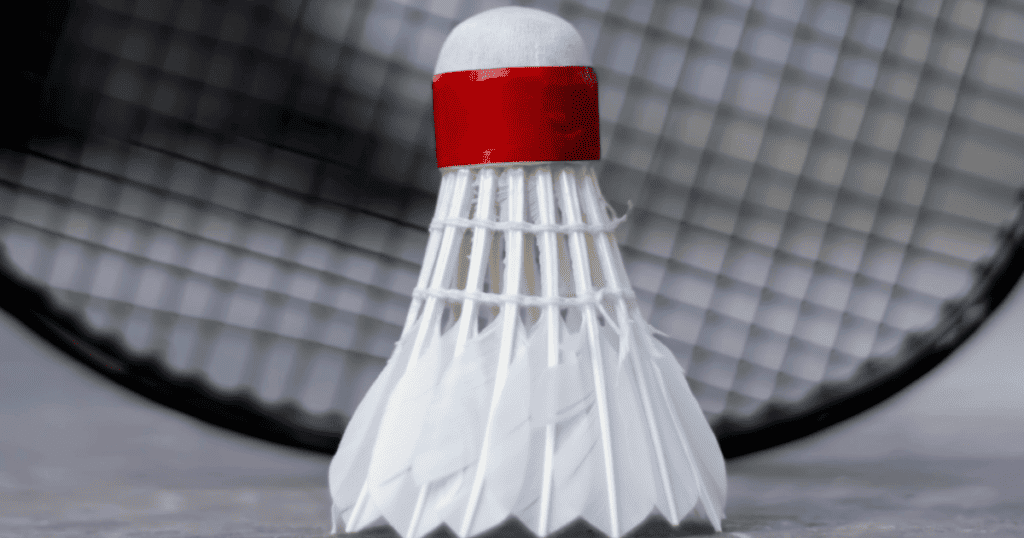Understanding Shuttlecock
Racket sports, from badminton to table tennis, are known for their fast-paced action and incredible displays of skill. But what keeps these games soaring and electrifying is the humble shuttlecock.
It might be small and lightweight, but it plays a pivotal role in these sports, providing the thrill and excitement that keep players and fans alike on the edge of their seats.
In this article, we’ll delve into the world of the shuttlecock, exploring what it is, its significance, and when and how to use it effectively.
What is a Shuttlecock?
A shuttlecock, often simply called a “shuttle,” is the projectile used in the sport of badminton. It consists of a cork base with 16 feathers (or synthetic materials) attached in a conical shape.
These feathers create drag when the shuttle is hit, causing it to drop quickly as it crosses the net. The shuttlecock’s unique design allows for a wide range of shots, from precise, delicate drops to powerful, high-speed smashes.
In other racket sports like table tennis and squash, similar small balls are used instead of shuttlecocks. These balls are designed for rapid back-and-forth play on a smaller scale, but they share the same purpose as shuttlecocks: to be the heart of the game.

The Significance of the Shuttlecock
The shuttlecock is much more than just a small object used in racket sports; it is the heartbeat of the game. Its significance lies in several key areas:
- Flight Dynamics: The shuttlecock’s unique design dictates its flight dynamics. It has a feathered skirt that imparts drag, causing it to slow down and drop as it crosses the net. This characteristic gives badminton its signature style, where players engage in fast and deceptive rallies, often close to the net.
- Versatility: The shuttlecock allows players to execute a wide variety of shots, from soft, precise net drops to thunderous smashes that can reach speeds of over 200 miles per hour. This versatility challenges players to master different techniques and adapt their playstyle.
- Tactics and Strategy: In badminton, the shuttlecock’s behavior influences tactics and strategy. Players use its flight characteristics to deceive opponents, employ slices and spins, and control the pace of the game. It adds depth and complexity to the sport, making it both mentally and physically demanding.
- Sensory Experience: The shuttlecock’s unique sound when struck—often described as a satisfying “pop” or “whack”—is an integral part of the sport’s sensory experience. It provides immediate feedback to players and adds an auditory dimension to the game.
When to Use the Shuttlecock
In Badminton
- Net Play: When you want to engage in net play, such as executing delicate net drops or net kills, the shuttlecock is your go-to. Its slow descent over the net allows for precise and controlled shots close to the net.For example, imagine a crucial badminton match. You’re at the net, and your opponent has made a weak return. You seize the opportunity, deftly flicking the shuttlecock over the net with a delicate net drop that leaves your opponent stranded.
- Smashes: If you aim to deliver powerful smashes and quick attacking shots, the shuttlecock is your weapon of choice. Its unique flight properties allow for blistering smashes that are challenging to return.In a high-stakes badminton match, you’re at the back of the court, and your opponent sends a weak lift over the net. You wind up and unleash a thunderous smash, sending the shuttlecock hurtling to the floor with such speed that your opponent can only watch in awe.
Summary
The shuttlecock, or its counterparts in other racket sports, is the unsung hero that makes these games what they are—fast-paced, thrilling, and challenging. Its unique flight dynamics, versatility, and role in tactics and strategy make it an essential part of the game.
Knowing when to use the shuttlecock or its equivalents in table tennis and squash is key to mastering these sports. In badminton, it’s about exploiting its flight properties for net play and smashes. In table tennis, it’s all about controlled spin and quick reflexes. In squash, it’s precision placement and controlled pace.
Next time you watch or step onto the court for a game of badminton, table tennis, or squash, take a moment to appreciate the unsung hero, the shuttlecock (or ball). It’s the heart of these sports, providing the excitement, challenge